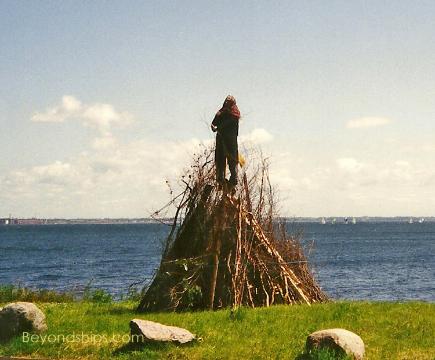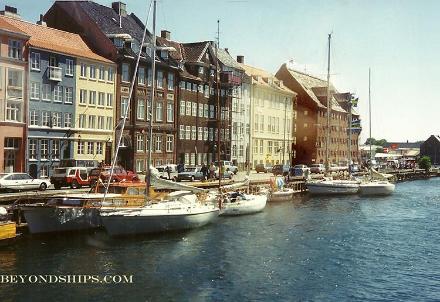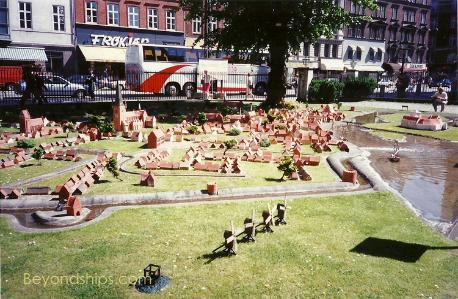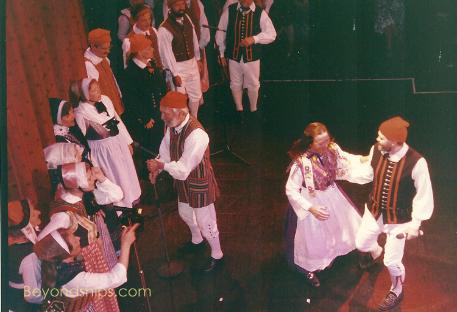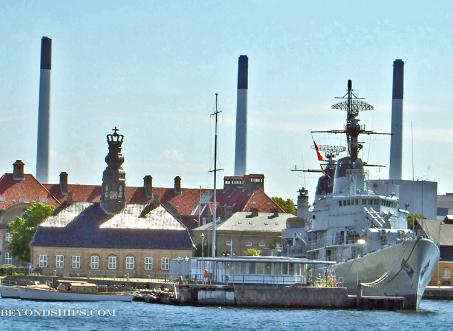|
Although there is evidence of settlements in the area
beforehand, the founding of Copenhagen is traditionally regarded as occurring in 1167 when Bishop Absalon built a fortress on the site now occupied by the Christiansborg Palace. The settlement's position at the exit of the Baltic into the North Sea was not only strategic militarily but also conducive to trade. Indeed, the name Copenhagen is believed to be a corruption of a word meaning "merchant's harbor." As the city's importance as a trading center grew, it was repeatedly attacked by the German Hanseatic League, which dominated trade in the Baltic. Danish history from then until the middle of the 20th Century is plagued by wars either with Germany or Sweden. One name that visitors to Copenhagen will undoubtedly hear is that of King Christian IV, who reigned Denmark for 59 years beginning in 1588. He was a popular king and sought to increase Denmark's power in the Baltic. His passion for building can be seen in Copenhagen's Renaissance palaces of Christiansborg and Frederiksborg. During the Napoleonic Wars, Denmark tried to remain neutral in order to trade with both France and Great Britain. It joined the League of Armed Neutrality with Russia, Sweden and Prussia in 1800. However, the British saw this move as a de facto alliance with France and in 1801, Admiral Horatio Lord Nelson led an attack by a British fleet against the Danish fleet in Copenhagen harbor. The British prevailed but it is considered the most hard fought of Nelson's victories. In 1807, the British again attacked Copenhagen and there was considerable damage to the city. The remainder of the Danish fleet was ceded to Britain. At the end of the Napoleonic Wars, Denmark was forced to cede Norway to Sweden, which had joined the Allies against Napoleon. Another significant loss of territory came in 1864 when Denmark was forced to cede the provinces of Schleswig and Holstein to Bismarck's Prussia. Nonetheless, the 19th Century is sometimes considered a golden age for Denmark during which the arts flourished and social progress was made. Escaping the revolutionary turmoil that griped much of Europe, Denmark peacefully became a constitutional monarchy in 1849. Also, several Copenhagen landmarks including the Tivoli Gardens and the Town Hall were built during this period. Denmark remained neutral during World War I. Following the war, the people of Schleswig and Holstein voted to re-join Denmark. Even though Denmark had again declared its neutrality, it was invaded by Nazi Germany at the start of World War II. In hopes of persuading the Danes to join with Germany, the full brunt of Nazi oppression was not immediately applied. However, the Danes did not cooperate. Indeed, several ships of the Royal Danish Navy were scuttled in Copenhagen harbor to prevent them from falling into Nazi hands. The country then suffered a brutal occupation. This was countered by an active resistance, which is credited with smuggling more than 7,000 Jews to Sweden and safety. After the war, Denmark joined the United Nations. In 1949, Denmark became a member of NATO and in 1973, a member of the European Economic Community and subsequently its successor the European Union. |
Above: The Nyhavn was once Copenhagen's seaport area. It is now known for its upscale restaurants and cafés.
Above: A model of Copenhagen in medieval times is displayed outside of the City Museum.
Below: Folk dancers in traditional Danish costumes entertain cruise passengers.. The Danish Navy frigate Peder Skram (F 352) served during the Cold War and is now a museum in Copenhagen
|
Cruise destination travel guide - - Denmark - - Copenhagen - - History
